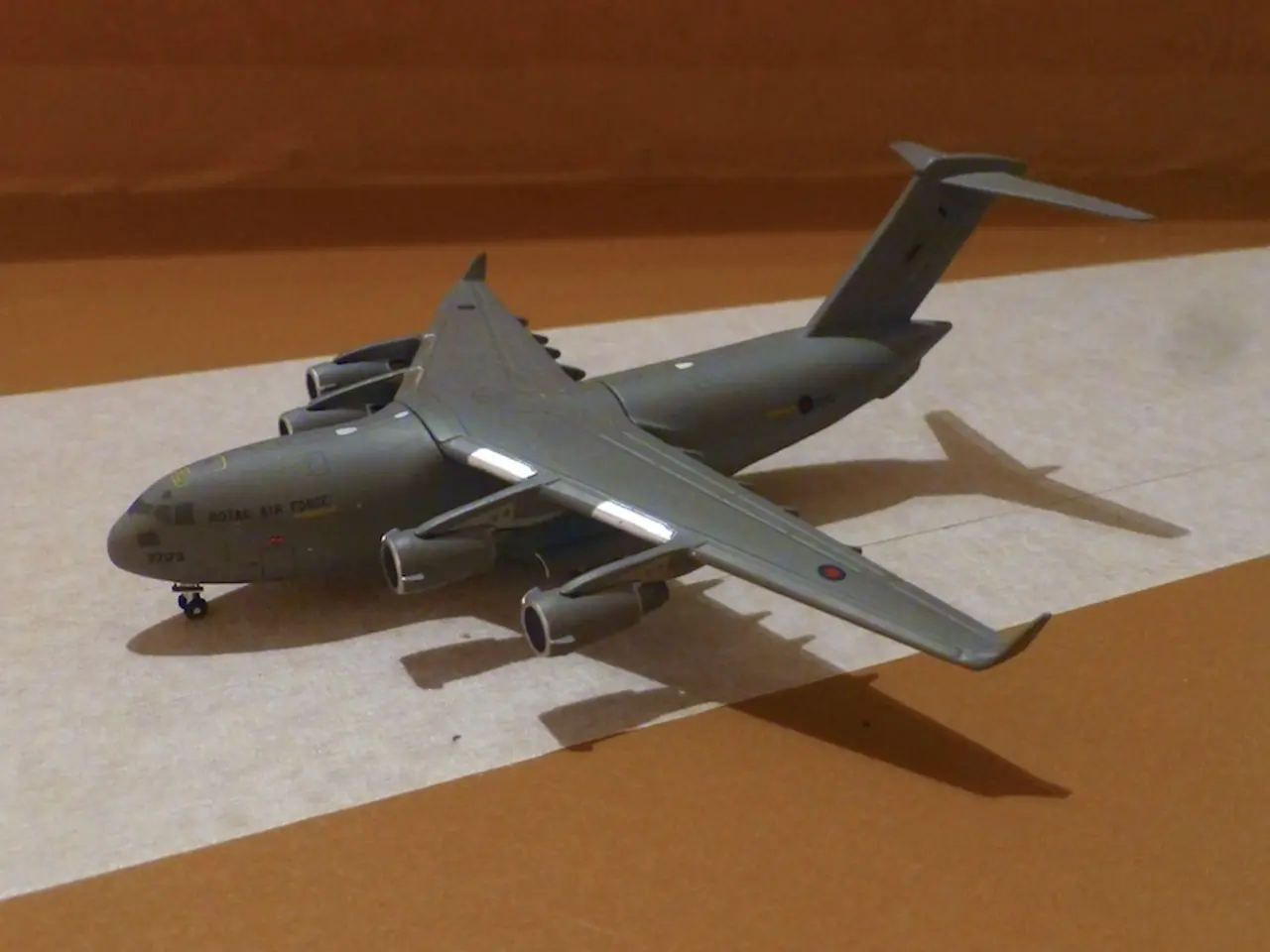Developing Innovative Propulsion Methods for UAVs
The world of drone technology is rapidly evolving, with advancements in various areas reshaping the landscape of aerial operations. One of the key drivers of this transformation is the development of innovative thrust technologies.
AI-Enhanced Intelligence
Artificial Intelligence (AI) is playing a significant role in the evolution of drones. AI is being trained to identify drones based on physical and kinematic features, improving autonomous operations, swarming, navigation, and countermeasures. This allows drones to differentiate themselves from the background and adapt missions intelligently [1].
Modular Propulsion Systems
Modular propulsion systems, such as those seen in Firestorm Labs' Tempest and MGI’s SkyShark, offer the flexibility to switch between different propulsion options like pusher props, micro turbojets, or gas turbines. This allows for optimal performance between stealth, speed, endurance, and range [1][2].
Regulatory Advances
Regulatory bodies, like the U.S. FAA, are also contributing to the evolution of drone flight. New rules permitting drones (up to 1,320 pounds) to operate beyond visual line of sight without cumbersome waivers dramatically expand commercial drone operations. This regulatory change supports broader industrial applications including manufacturing, agriculture, energy, medical delivery, and filming, allowing operators to exploit longer-range and more autonomous flights safely and at scale [3][4][5].
Impact on the Industry
These advancements have far-reaching implications for manufacturers, operators, and end users. Manufacturers gain opportunities to develop adaptable, scalable propulsion systems and AI-driven platforms tailored to diverse mission requirements, driving innovation in drone design and capabilities [1][2].
Operators benefit from reduced regulatory burdens due to BVLOS permissions, enabling expanded operational scope, longer missions, and new commercial applications previously constrained by line-of-sight restrictions [3][4].
End users experience enhanced services such as faster medical deliveries, improved crop monitoring, industrial inspections over large areas, and more effective surveillance or strike capabilities due to improved drone endurance, autonomy, and payload versatility [3][4].
Other Promising Technologies
Beyond these key innovations, other exciting developments are on the horizon. Electric ducted fans (EDFs) are compact propulsion systems that generate thrust by accelerating airflow through a duct, reducing drag and improving directional control. Coaxial systems offer a compact and powerful alternative to traditional multirotor configurations, reducing the overall footprint of the aircraft while increasing its lift capacity [6].
Ion and plasma propulsion systems generate movement without traditional moving parts, using electric fields to accelerate ionized gas particles, creating silent, ultra-efficient thrust. Tilt-rotor and tilt-wing systems allow a drone's motors or entire wings to pivot between vertical and horizontal orientations, enabling both vertical takeoff and efficient forward flight [7].
The Future of Drone Propulsion
Collectively, these technologies foster a future where drones are more autonomous, adaptable, mission-capable across contested or GPS-denied environments, and ubiquitously integrated into commercial and defense sectors. By combining mechanical innovation with embedded intelligence, companies like IPET are helping to push drone propulsion toward a smarter, more connected future—where thrust isn't just about power, but about precision, adaptability, and longevity [8].
References: [1] Firestorm Labs: Tempest Drone with Modular Propulsion System - https://www.firestormlabs.com/tempest [2] MGI: SkyShark Drone with Modular Propulsion System - https://www.mgi-group.com/products/skyshark [3] FAA Announces BVLOS Rule for Drones - https://www.faa.gov/uas/resources/bvlo/bvlo_rule/ [4] Drone Industry Association: Impact of BVLOS Rule on Commercial Drone Operations - https://www.droneni.org/bvlo-rule-impact-on-commercial-drone-operations/ [5] UAS Magazine: The Impact of BVLOS on Commercial Drone Operations - https://www.uasmagazine.com/the-impact-of-bvlos-on-commercial-drone-operations/ [6] Electric Ducted Fan (EDF) Propulsion System - https://www.researchgate.net/publication/327902714_Electric_Ducted_Fan_Propulsion_System [7] Tilt-Rotor and Tilt-Wing Systems for Drones - https://www.researchgate.net/publication/329790811_Tilt-Rotor_and_Tilt-Wing_Systems_for_Drones [8] IPET: Redefining Drone Performance - https://www.i-pet.ai/
Technology advancements in the field of Artificial Intelligence (AI) are significantly impacting drones, as AI is being trained to improve autonomous operations, swarming, navigation, and countermeasures.
Modular propulsion systems, such as those in Firestorm Labs' Tempest and MGI’s SkyShark, are key technologies that offer the flexibility to switch between different propulsion options, enabling optimal performance and a wide range of drone applications.




